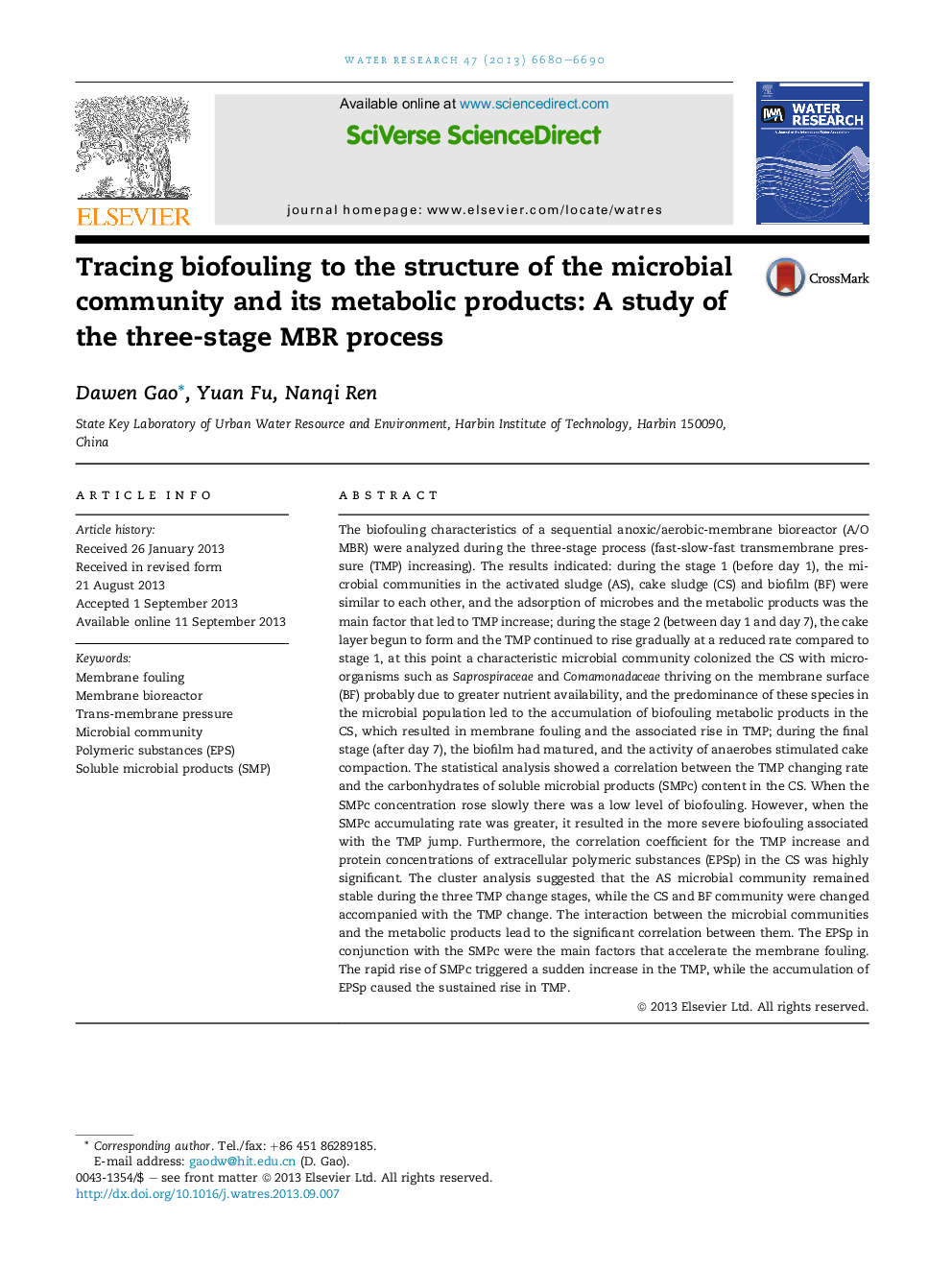| کد مقاله | کد نشریه | سال انتشار | مقاله انگلیسی | نسخه تمام متن |
|---|---|---|---|---|
| 4481919 | 1316840 | 2013 | 11 صفحه PDF | دانلود رایگان |

• The microbes in Membrane Bioreactor had the great phylogenetic divergence.
• The biofouling depended on the characteristics of the biofilm community structure.
• β-carbohydrates play a key role in membrane fouling than proteins.
The biofouling characteristics of a sequential anoxic/aerobic-membrane bioreactor (A/O MBR) were analyzed during the three-stage process (fast-slow-fast transmembrane pressure (TMP) increasing). The results indicated: during the stage 1 (before day 1), the microbial communities in the activated sludge (AS), cake sludge (CS) and biofilm (BF) were similar to each other, and the adsorption of microbes and the metabolic products was the main factor that led to TMP increase; during the stage 2 (between day 1 and day 7), the cake layer begun to form and the TMP continued to rise gradually at a reduced rate compared to stage 1, at this point a characteristic microbial community colonized the CS with microorganisms such as Saprospiraceae and Comamonadaceae thriving on the membrane surface (BF) probably due to greater nutrient availability, and the predominance of these species in the microbial population led to the accumulation of biofouling metabolic products in the CS, which resulted in membrane fouling and the associated rise in TMP; during the final stage (after day 7), the biofilm had matured, and the activity of anaerobes stimulated cake compaction. The statistical analysis showed a correlation between the TMP changing rate and the carbonhydrates of soluble microbial products (SMPc) content in the CS. When the SMPc concentration rose slowly there was a low level of biofouling. However, when the SMPc accumulating rate was greater, it resulted in the more severe biofouling associated with the TMP jump. Furthermore, the correlation coefficient for the TMP increase and protein concentrations of extracellular polymeric substances (EPSp) in the CS was highly significant. The cluster analysis suggested that the AS microbial community remained stable during the three TMP change stages, while the CS and BF community were changed accompanied with the TMP change. The interaction between the microbial communities and the metabolic products lead to the significant correlation between them. The EPSp in conjunction with the SMPc were the main factors that accelerate the membrane fouling. The rapid rise of SMPc triggered a sudden increase in the TMP, while the accumulation of EPSp caused the sustained rise in TMP.
Journal: Water Research - Volume 47, Issue 17, 1 November 2013, Pages 6680–6690